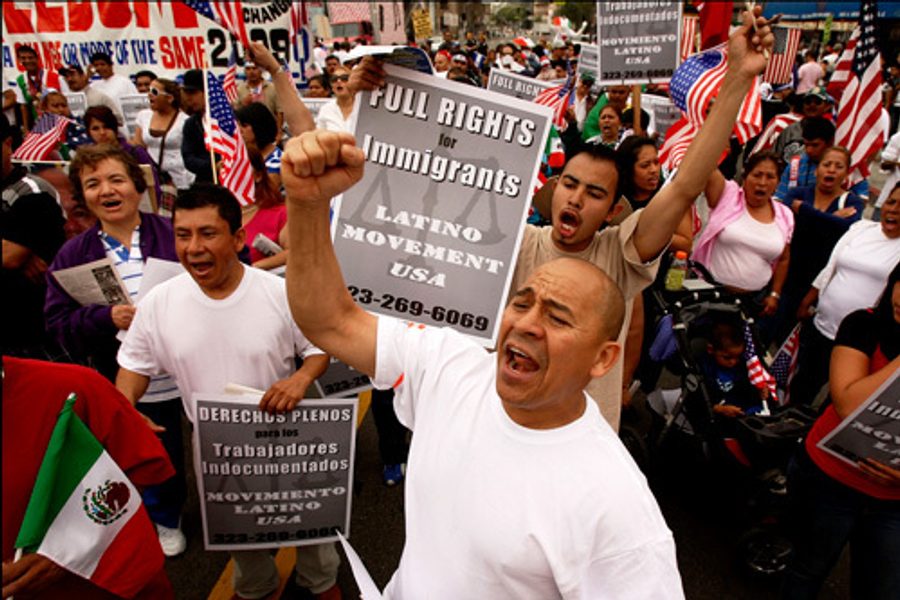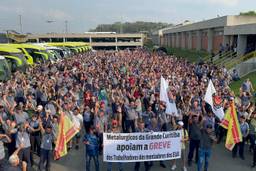
The stakes were huge in May 1886 when workers in Milwaukee demanded an eight-hour limit to the workday. The fundamental issue, as one company owner put it: “My right to run my works and your right to sell me your time and labor. Our whole civilization and independence hangs on these.”
Indeed, Milwaukee’s working class received a clear message about precisely the kind of “civilization” that their employers and Gov. Jeremiah Rusk had in mind.
A general strike for the eight-hour day had begun on May 1 and continued to gain momentum. as many major firms closed down rather than face a struggle with thousands of determined workers. The strike continued to spread across Milwaukee, with workers parading from one factory to the next, drawing out fellow laborers to join the battle for a reduced workweek.
By May 5, Milwaukee’s corporate owners and Gov. Rusk had seen enough, and Rusk sent in the state militia.
On that morning, some 1,500 workers gathered at St. Stanislaus Catholic Church and then marched to the North Chicago Rolling Mills plant in the densely-packed Bay View industrial neighborhood near Lake Michigan.
FROM ROLLING MILLS TO HAYMARKET, POLICE ATTACK
The Rolling Mills were the largest workplace in the city that was still operating. Gov. Rusk authorized the militia to shoot down the strikers, and the militia commander gave the workers “an inaudible warning to stop,” according to Jeremy Brecher’s classic history Strike!
Even though only a small number of workers heard the warning, the order to “fire” was issued, and seven workers fell dead from the bullets of the militiamen.
At roughly the same time, ninety miles to the south in Chicago, rallies in Chicago for the eight-hour day also culminated in bloodshed. Four workers were killed at the McCormick Harvester Works. A peaceful rally at Haymarket Square was concluding when Chicago police suddenly charged the rally, and nine were killed by a bomb thrown into their midst. Four of the workers’ leaders were hung in the atmosphere of hysteria that followed.
But despite the immediate setbacks to labor caused by the violence and escalating repression, the eight-hour movement continued to build across the nation. And the martyrdom of workers in Milwaukee and Chicago inspired unionists across the world to make May 1 a day of solidarity with workers in America. The first May Day was celebrated in 1890.
FROM MCCARTHY TO NIXON
May Day was marginalized in the United States during the McCarthy Era, but the rebellious spirit of May 1886 was re-kindled in 1970 when President Richard Nixon’s invasion of Cambodia was followed by the killings of four students at Kent State. Hundreds of campuses witnessed massive student protests and a national student strike ensued across the nation.
Especially significant in May 1970 was the impact on working-class universities like the University of Wisconsin-Milwaukee which I attended, where there was lots of anti-war sentiment but relatively limited activism.
In the early 1970s, an increasingly militant and youthful left wing of the labor movement again restored some life to May Day in Milwaukee before it again pretty much petered out. But starting in 1986, a full century after the 1886 massacre the Wisconsin Labor History Society began holding annual events to commemorate the seven workers’ sacrifice of their lives.
21ST CENTURY MAY DAY RESURGENCE
However, the emergence of a vast new section of the working class – undocumented workers – breathed new life into May 1 with annual events starting in 2006. Latinos — especially economic refugees from Mexico displaced by the North American Free Trade Agreement—were by far the largest contingent. But the events also highlighted the plight of other ethnic groups with large numbers of undocumented workers, like the Irish and Polish.
Hundreds of workplaces in Milwaukee shut down each May 1 because undocumented workers have announced that they will be attending the rally. The rallies have been enormous – ranging up to 70,000 or more – making them the largest protest events in Wisconsin history. Arizona’s ominous new anti-immigrant law is sure to pump this year’s attendance.
While some segments of the labor movement are not yet comfortable with the AFL-CIO’s fighting for full worker rights for immigrants and for promoting immigration reform, many others in the union movement finally recognize that protecting the rights of immigrants is the only way to place a solid floor under wages and conditions for all workers in the U.S.
Moreover, many of the new immigrants bring from their native lands actual experience in unions and a belief in their collective power, things denied American workers by US management’s virtually non-stop war against worker rights.








